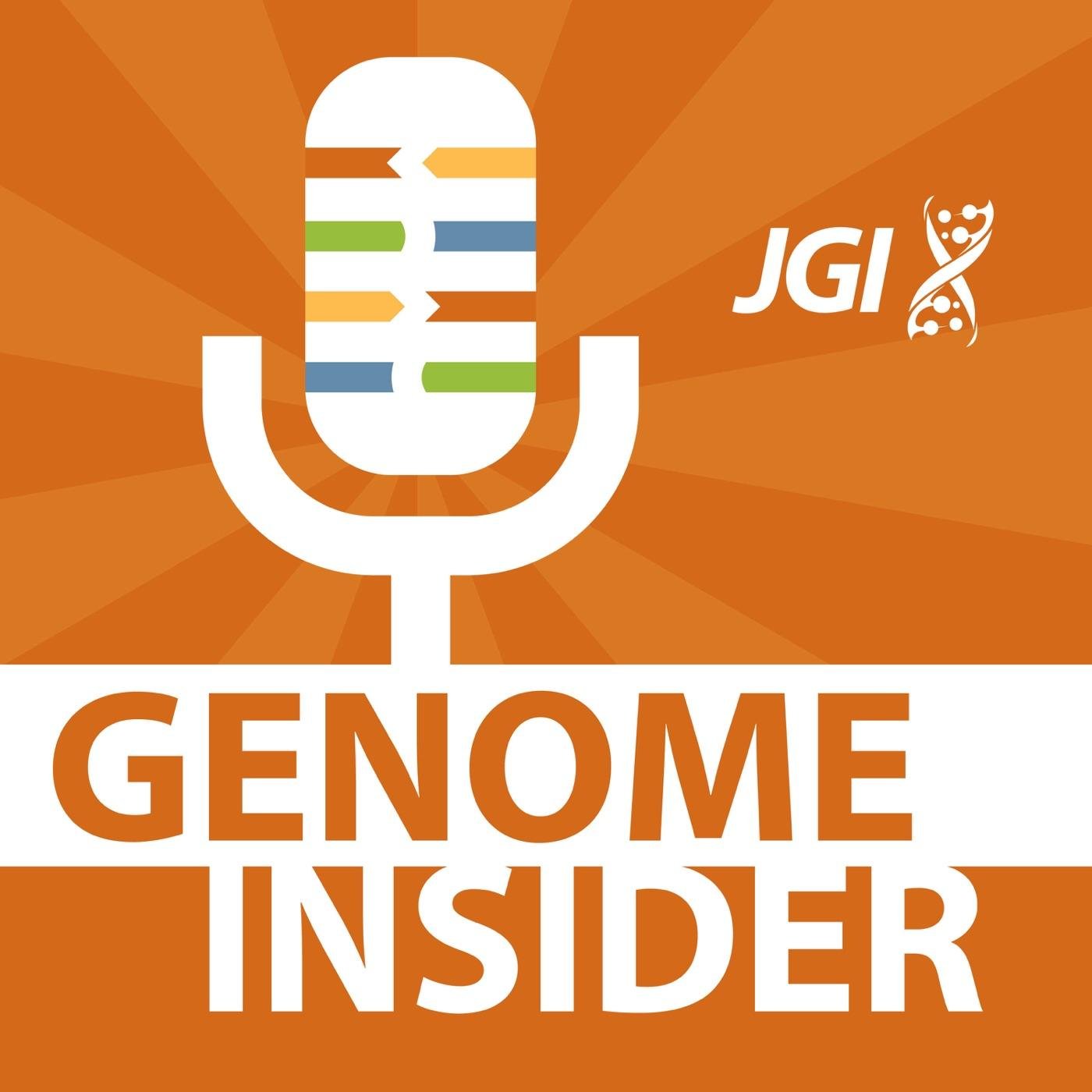
Stories where genes and genomes are key to solving energy and environmental challenges. Hear diverse voices in science talk about their JGI-supported research to better understand — and harness — the superpowers encoded in plants, fungi, microalgae, environmental viruses, and bacteria to contribute to a more sustainable world.&nbsp;</p>
In this episode, undergraduates adopt genomes that the JGI sequenced, but never published in the literature. These students analyze the genomes, write reports, and publish first-author papers, making the data available for future research.
Hear from Rekha Seshadri (JGI) and Matt Escobar (California State San Marcos) about how the Adopt-A-Genome project got started. Plus, Kalyani Maitra (California State Fresno) and two students, Angela and Mark Soghomonian share what it was like to take on one of these genomes.
Links from this episode:
Kasey Markel and Patrick Shih (UC Berkeley and the Joint BioEnergy Institute) are looking for new ways to engineer plants. So they’ve looked into wasps that program oak trees to grow structures called galls.
In this episode, hear from Kasey and Patrick about how this project unfolded, and how they worked with the JGI's metabolomics program to find out more about these weird little pods.
Links from this episode:
To engineer yeast to do more, and understand genomes in general, Jef Boeke, Weimin Zhang (NYU Langone Health) and Leslie Mitchell (Neochromosome) have worked to replace yeast’s native chromosomes with synthetic versions. This project has turned out to be an international collaboration, with some artistic endeavors along the way. Eventually, the goal is to create an entirely human-generated yeast genome.
Links from this episode:
Three stories of JGI-supported research, connected to nutrient cycles. Francis Martin and Lucas Auer discuss their work on communities of forest floor fungi. Allison Joy looks into seagrass meadows' carbon sequestration with insights from Adam Healey and Xiao Ma. And Karen Serrano and Benjamin Cole explain their research on the symbiotic relationship between mycorrhizal fungi and plant roots.
Links from this episode:
Rainforests store a big fraction of all the carbon on Earth, and soil microbes play a key role in pulling that carbon out of the atmosphere. This episode, researchers take a look at what happens to that storage when a rainforest hits a drought. Tag along with their experiments in a fully enclosed, human-made ecosystem: Biosphere 2.
Links from this episode:
This is the third and final episode of our series on a giant metagenome assembly from Wisconsin’s Lake Mendota. In the last two episodes, we’ve covered the specialized software and supercomputers behind this project. But every part of this project depends on lakewater samples — so this episode is a look at how researchers get these specialized snapshots of a freshwater ecosystem.
Links from this episode:
This series is the story of a giant metagenome assembly from Wisconsin’s Lake Mendota. In this episode: a look at the supercomputing that stitches together large datasets with the assembler program MetaHipMer2.
Oak Ridge National Lab is home to two supercomputers — Summit and Frontier — that process terabytes of data with MetaHipMer2. And the National Energy Research Scientific Computing (NERSC) has another supercomputer, Perlmutter that works at large scale. But nearby the JGI, a cluster called Dori is also capable of running smaller assemblies — so we head there for a sense of what this supercomputing looks like.
Links from this episode:
Lake Mendota sits right next to the University of Wisconsin, Madison. And Trina McMahon's lab has been sampling the microbes of that lake for over 20 years, to understand how the freshwater ecosystem works.
So a few years ago, when they set out to analyze 500 metagenomes, it was the biggest project the JGI had ever put together.
The next 3 episodes are the story behind that giant assembly from Lake Mendota. In this episode: the software evolution that made metagenome assemblies like this possible.
Links from this episode:
To set up flexible, repeatable experiments on plants and microbes, Trent Northen’s group at Berkeley Lab created a fabricated ecosystem – an EcoFAB. These small plastic growth chambers let researchers around the world compare their work consistently. And EcoFABs also work well in the classroom. This episode, we visit Los Medanos College to see EcoFABs in action in Jill Bouchard’s BIO 21 lab course.
Links from this episode:
To understand how organisms adapt to extreme environments, Marike Palmer and Brian Hedlund study organisms living in hot springs. Hear how their recent work revealed more about the history of the Chloroflexota phylum and a new way of moving: a tail-like flagella.
Links from this episode: